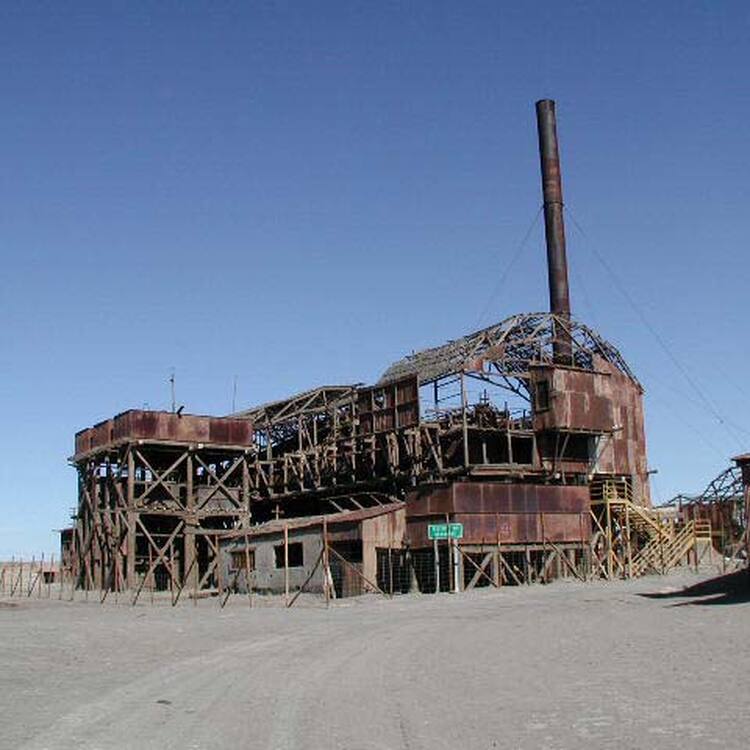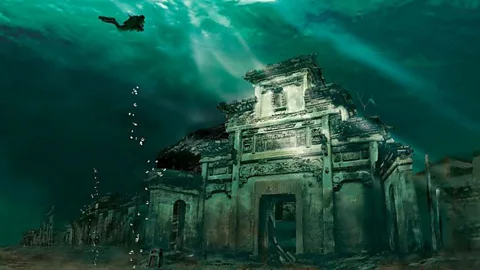Faded footsteps, rusted gates, and ghostly silence echo through places long forgotten—yet eerily preserved in time. These abandoned sites aren’t just relics of history; they’re magnetic in their mystery and unsettling beauty. Whether it’s a sunken village, an overgrown asylum, or a crumbling amusement park, each location whispers stories that were never meant to be erased. With curiosity surging for offbeat travel and dark tourism, these eerie destinations have become fascinating windows into forgotten worlds. This guide reveals the creepiest abandoned places around the globe that continue to haunt, intrigue, and pull in those brave enough to look closer.
Pripyat, Ukraine – Soviet ghost city by Chernobyl
Once a bustling city home to Chernobyl’s nuclear plant workers, Pripyat now stands as a chilling relic of Soviet ambition undone by disaster. Vacated overnight in 1986 after the catastrophic reactor explosion, the city remains frozen in time—desks still hold notebooks, and amusement rides rust beneath overgrown trees. Nature has crept back in, softening concrete edges and overtaking stairwells. The iconic Ferris wheel looms eerily in the silence, never having spun with joy. Soviet-era architecture, propaganda posters, and decaying infrastructure now serve as ghostly reminders of a thriving community that vanished in hours. Today, Pripyat is a restricted zone attracting urban explorers and radiation researchers alike. Visitors must navigate decaying buildings under strict supervision due to lingering radioactive hotspots. This abandoned city offers a stark, unsettling window into Cold War history, nuclear fallout, and human vulnerability. Keywords like nuclear ghost town, radioactive ruins, and Chernobyl exclusion zone are inseparable from its legacy. Despite being off-limits for decades, Pripyat continues to evoke fascination and fear—its silence louder than ever in a world that moved on. For those captivated by the remnants of civilization halted mid-step, this is one of the most disturbing abandoned places on Earth.
Kolmanskop, Namibia – Sand-engulfed diamond town

Buried beneath rolling dunes in Namibia’s unforgiving desert lies Kolmanskop, a once-thriving diamond mining town turned surreal sand trap. At the height of the diamond rush in the early 1900s, this remote outpost featured German-style architecture, a ballroom, hospital, and even an ice factory—luxuries almost unthinkable in such an arid place. When richer deposits were discovered elsewhere, the town was abandoned by the 1950s, leaving wind and sand to claim what remained. Today, visitors wander through houses half-filled with dunes, where floorboards buckle under shifting weight and doorways open into rooms of golden silence. Peeling wallpaper, antique bathtubs, and crumbling staircases stand as eerie remnants of wealth lost to time. The surreal mix of desert encroachment and decaying luxury paints an otherworldly picture of desolation. Sand swallowing civilization gives Kolmanskop its haunting aesthetic, captured frequently in ghost town photography and eerie travel documentaries. The town is a haunting reminder of impermanence, illustrating how quickly nature reclaims opulence when human ambition fades. For travelers drawn to surreal decay and strange beauty, Kolmanskop offers a visual narrative like no other.
Chateau Miranda, Belgium – Gothic orphanage ruin

Tucked away in Belgium’s Ardennes forest, Chateau Miranda once stood as a fairy-tale castle turned orphanage with a sinister edge. Built in the 19th century by French aristocrats fleeing revolution, it was later transformed into a holiday home for children displaced after World War II. Over time, the grandeur gave way to abandonment, and its turrets, sweeping staircases, and stained-glass remnants fell into haunting disrepair. Fire damage, graffiti, and collapsing floors only added to its chilling reputation. Locals whispered of shadows in its halls, and ghost hunters often reported unexplained noises, cold spots, and a looming sense of dread. Despite its majestic Gothic design, the decaying structure became infamous for urban legends and paranormal investigations. Before being demolished in 2017, it stood as a striking example of architectural decay paired with psychological unease. Haunted castle ruins, gothic architecture, and abandoned orphanages are all phrases tied closely to its legacy. For years, Chateau Miranda lured explorers and thrill-seekers intrigued by its tragic history and eerie ambiance. Though the building is now gone, its ghostly narrative lingers in photos, stories, and documentaries—cementing its place among Europe’s most unnerving abandoned landmarks.
Oradour-sur-Glane, France – Preserved WWII ghost village

Steel-framed bicycles rust outside silent homes, sewing machines sit mid-stitch, and clocks remain stopped—all marking the moment Oradour-sur-Glane died. In June 1944, Nazi troops massacred 642 villagers here, leaving the town in ruins as a permanent testimony to the horrors of war. Instead of rebuilding, France chose preservation. Today, charred vehicles, broken storefronts, and rubble-lined streets remain untouched. Signs ask visitors not to disturb the wreckage, offering a solemn museum-like experience beneath open skies. Walking its silent lanes is like moving through a photograph of tragedy suspended in time. The destroyed church, where many women and children were locked inside before it was set ablaze, remains the emotional heart of the site. Keywords such as preserved war ruins, Nazi atrocity sites, and WWII ghost village rank strongly in historical searches. This haunting landmark is not a typical abandoned site—it’s a deliberate memorial, drawing educators, historians, and descendants year-round. Visitors come to remember, to understand, and to witness the cost of hate. As one of Europe’s most powerful ruins, Oradour-sur-Glane is both devastating and necessary. It stands not only as a ghost town but as an indictment carved in stone, untouched so future generations never forget.
Dhanushkodi, India – Cyclone-wrecked coastal town

At the tip of India’s southern coast lies Dhanushkodi, a town reduced to skeleton structures and scattered debris by a ferocious cyclone in 1964. Once a thriving transit point between India and Sri Lanka, complete with a railway station, post office, and church, it was decimated in a single night. Nearly 2,000 people died, and the town was never rebuilt—declared uninhabitable by the government. Today, what remains are twisted ruins set against a backdrop of crashing waves and vast skies. The haunting stillness, broken only by wind and ocean, creates an almost apocalyptic atmosphere. Salt-stained remnants of colonial architecture and railway tracks fading into the sand whisper stories of a town erased by nature. Abandoned beach town, cyclone ruins, and ghost coastal village are keywords often tied to this haunting site. Pilgrims visit en route to Rameswaram, often pausing to take in the melancholy beauty of a place lost to time. Despite the devastation, Dhanushkodi attracts curious travelers and spiritual seekers, drawn by legends of the Ram Setu bridge and the town’s eerie calm. It serves as a powerful reminder of nature’s fury and the impermanence of human settlements.
Bodie, USA – Gold-rush town frozen in time

High in California’s Sierra Nevada mountains, Bodie clings to existence as a perfectly preserved slice of the American West. Once booming with saloons, brothels, and mines during the late 1800s gold rush, the town spiraled into decline as veins dried up and prospectors moved on. By the mid-20th century, it was a ghost town. But unlike others, Bodie remains largely untouched, locked in what historians call “arrested decay.” Inside dust-covered homes, dinner plates rest on tables, curtains hang in broken windows, and pianos gather silence. The eerie preservation is no accident—Bodie is now a California State Historic Park. Rangers maintain the town’s frozen-in-time quality, ensuring nothing is restored, only stabilized. Travelers and photographers walk among relics of frontier hardship, drawn by its authentic atmosphere and haunting quiet. The site hosts over 100 structures, from a schoolhouse with chalk still on the board to a general store with faded product labels. For those seeking an authentic glimpse into post-gold-rush decay, Bodie is unmatched—its silence tells a story louder than words.
Hashima Island, Japan – “Battleship” labor camp island

Nicknamed “Battleship Island” for its silhouette, Hashima looms off Japan’s coast like a sunken warship. But this isn’t a war relic—it’s an abandoned coal mining colony once bustling with over 5,000 residents. Operated by Mitsubishi from 1887 to 1974, Hashima became infamous for its cramped, concrete apartment blocks and oppressive labor conditions, especially during WWII when Korean and Chinese prisoners were forced to work in harsh tunnels below sea level. When the mine shut down abruptly, the island was evacuated, leaving behind decaying towers, crumbling stairwells, and rusting industrial ruins. No boats arrived for decades, and the sea reclaimed the silence. Today, it’s partially open to tourists under strict supervision. Concrete structures remain largely intact but are now cloaked in corrosion, mold, and haunting emptiness. For urban explorers and dark tourism enthusiasts, Hashima offers a glimpse into industrial ambition left to rot—a concrete graveyard swallowed by time and sea.
Poveglia, Italy – Plague quarantine island

Fog often settles thick over the Venetian Lagoon, shrouding the silhouette of Poveglia—a place long avoided by locals. Once used as a quarantine station during plague outbreaks in the 18th century, and later as a mental asylum, Poveglia carries a reputation as one of the most haunted locations in Europe. Mass graves reportedly hold the remains of over 100,000 plague victims, their ashes woven into the island’s soil. Rusted hospital equipment and graffiti-covered walls remain inside the crumbling asylum, where whispers of unethical experiments still echo through folklore. Though officially closed to the public, the island has drawn paranormal investigators and thrill-seekers for decades. Keywords such as haunted quarantine island, plague ghost site, and abandoned mental hospital strongly define its eerie relevance. Stories of ghosts, demonic presences, and unnatural silence abound, yet its true horror lies in historical truth rather than fantasy. Poveglia’s decaying bell tower, once used to signal incoming plague ships, now looms as a silent watchtower over a place many consider cursed. For those captivated by death’s residue and Europe’s darkest corners, few places match the unsettling aura of this desolate isle.
Humberstone, Chile – Desert nitrate mining camp

Bleached by relentless sun and scoured by desert winds, Humberstone lies motionless in Chile’s Atacama Desert—a once-booming nitrate mining settlement turned skeletal ruin. Founded in the late 1800s during the saltpeter boom, it thrived until synthetic fertilizers made natural nitrate obsolete. By the 1960s, Humberstone was deserted, leaving behind worker barracks, rusting machinery, and a grand theater now echoing with emptiness. The ghost town’s eerie stillness is punctuated by creaking swings in the schoolyard and broken doors swaying in dry wind. UNESCO designated it a World Heritage Site, preserving its cultural and industrial legacy. Visitors wander through dusty workshops, faded signage in English and Spanish, and rusting rail tracks disappearing into nothingness. The contrast between human ambition and harsh desert desolation gives Humberstone its haunting presence. It stands not only as a record of economic boom and collapse but also as a testament to how entire communities vanish when progress shifts. In the driest place on Earth, Humberstone reminds us that prosperity built on a single resource can evaporate as fast as it appears.
Tianducheng, China – Eerie Paris replica ghost city

Towering over manicured lawns, a half-scale replica of the Eiffel Tower rises—not in Paris, but in Tianducheng, China. Conceived in the early 2000s as a luxury European-style residential project, the city was built to mimic Paris, complete with Haussmann-style facades, fountains, and tree-lined boulevards. But the dream fizzled. Despite its grandeur, Tianducheng failed to attract enough residents and soon earned a reputation as a ghost city. Tower blocks sit largely vacant, echoing footsteps replace the expected bustle, and wedding photoshoots often outnumber actual tenants. Though recent years have seen modest population growth, much of the development still feels eerily lifeless. Urban replica gone wrong, Chinese ghost city, and fake Paris town are common search terms associated with Tianducheng. The surreal mix of imitation and abandonment fuels both curiosity and unease. It’s a place where artificial charm contrasts starkly with real desolation—an architectural mirage that confuses the senses. For those intrigued by urban experiments that didn’t pan out, Tianducheng is a modern cautionary tale. It showcases the risks of overbuilding and forced aesthetic, wrapped in eerie stillness. A city built to embody romance now echoes with the quiet of missed intentions.
Madness Mansions (various) – Collapsing haunted villas

Scattered across remote woodlands, crumbling hillsides, and forgotten towns, these derelict mansions once belonged to the wealthy, the powerful—or the unhinged. Often built with lavish detail and secret rooms, many were abandoned after tragedies, rumored madness, or unexplained disappearances. These decaying estates now serve as the stuff of legend—complete with peeling wallpaper, rotting staircases, and chandeliers dangling like broken memories. Locals often speak of cursed histories or ghost sightings, heightening their reputation as haunted manors. Commonly associated with phrases like abandoned haunted house, gothic ruin, and forgotten millionaire estate, these mansions have become magnets for thrill-seekers and paranormal investigators. Though each structure tells a different story, they share recurring themes: a sudden desertion, a descent into ruin, and a legacy steeped in whispers. From the American South to European countryside estates, they present eerie snapshots of once-opulent lives now lost to time and decay. Many are fenced off, deemed unsafe, while others lie deep in forests where ivy and roots consume the walls. These homes were built to impress—but now they unsettle. Their silence isn’t empty—it’s heavy. For those captivated by architectural ghosts and haunted luxury, Madness Mansions are grim chapters still open to those who dare look inside.
Underwater Ming Village, China – Submerged historical town

Below the surface of China’s Qiandao Lake lies the ghostly silhouette of a perfectly preserved Ming-era village. Once a thriving town called Shi Cheng, or Lion City, it was deliberately flooded in 1959 to create a hydroelectric dam. Hidden underwater ever since, its ancient archways, detailed stone carvings, and five-story buildings now rest in an aquatic grave, untouched by time yet out of sight. Despite being submerged for decades, the city remains remarkably intact thanks to minimal oxygen exposure and still waters. Divers navigating its eerily preserved streets encounter stone dragons, wooden beams, and temple facades frozen in silence. Occasional exploration teams document the site using submersibles and underwater drones, offering glimpses into this rare submerged cultural treasure. The juxtaposition of historical depth and literal submersion lends Shi Cheng a surreal mystique, as though history quietly lives on beneath the waves. Unlike typical ruins eroded by time and elements, this village found preservation in submersion—a quiet testament to China’s vast heritage and changing priorities. For adventurers and historians alike, it’s an underwater time capsule that continues to captivate.
Athens Abandoned Waterpark, Greece – Moss‑choked slides

What was once a bright playground of laughter and sun-soaked splashes now lies in eerie silence outside Athens. This abandoned waterpark—closed abruptly in the early 2000s due to financial issues—has since transformed into a post-apocalyptic jungle of decay. Slides sit twisted and cracked, their plastic faded by relentless sun. Moss blankets walkways where flip-flops once slapped, and stagnant pools now host swarms of mosquitoes instead of swimmers. Overgrown weeds pierce through pavement, and mold-streaked buildings still bear cartoonish signage advertising long-faded fun. Urban explorers navigating the site document warped attractions, graffiti-tagged lockers, and the eerie stillness that settles over places built purely for joy. Terms like abandoned theme park, decaying water attraction, and urban exploration Athens consistently accompany this forgotten site online. Though officially off-limits, the site draws photographers and locals curious about its fate. The rapid descent from family destination to haunted landmark feels unsettlingly recent, as if echoes of summer still linger in the air. For those drawn to forgotten entertainment spaces and nature’s quiet revenge on man-made pleasure, this waterpark is more than a ruin—it’s a reminder of how quickly joy can be drained from a place when reality comes crashing in.
Waiwera Hot Pools, NZ – Rusting thermal‑park decay

Just north of Auckland, the once-popular Waiwera Hot Pools now languish behind fences, overtaken by rust and vines. For decades, it served as New Zealand’s premier geothermal resort, drawing families, tourists, and spa-goers to its natural hot springs and water slides. But after years of financial trouble, mismanagement, and pipe failures, the park shut down in 2018, leaving its steam-filled past behind. Today, twisted metal loungers, drained pools, and cracked tile mosaics remain as souvenirs of a vibrant destination gone dormant. Algae-stained waters reflect graffiti-scrawled walls, and vines crawl over broken gates and signage. Despite its closure, the site continues to attract trespassers and photographers fascinated by its haunting transformation. There’s a strange poetry in the contrast—natural thermal energy still bubbling underground while human constructs above rot and flake away. For locals, the park’s decline is bittersweet nostalgia; for explorers, it’s a cinematic glimpse of decay meeting geothermal mystique. Though plans for redevelopment occasionally surface, Waiwera remains trapped between memory and neglect—a warm sanctuary gone cold, offering a rare look at nature reclaiming what was once bottled and sold as paradise.
Island of Dolls, Mexico – Creepy doll‑strewn islet

Hanging from trees, nailed to posts, and floating in murky canals—hundreds of weathered dolls stare blankly on this eerie island south of Mexico City. Known as Isla de las Muñecas, or Island of the Dolls, this strange site was never intended to be a tourist destination. It began as a personal shrine by caretaker Don Julián Santana, who believed hanging dolls would appease the spirit of a drowned girl he claimed haunted the island. Over decades, he collected more and more, each more decayed than the last. Now, their missing limbs, dirt-smudged faces, and lifeless eyes create a grotesque yet captivating spectacle. Keywords such as haunted doll island, Xochimilco ghost attraction, and creepiest places in Mexico frequently trend around this unsettling site. Visitors arrive by boat, often leaving behind their own dolls to join the ever-growing collection. Despite—or perhaps because of—its disturbing aesthetic, the island draws thousands of curious onlookers each year. What started as one man’s spiritual offering has become a macabre museum of the uncanny. Whether viewed as a tribute, a warning, or an art installation of the absurd, the Island of Dolls remains one of the most bizarre and chilling abandoned spots on Earth.
